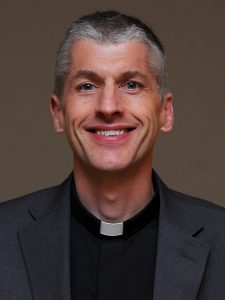 By Pr. Craig Pederson
By Pr. Craig Pederson
It happened 30 years ago, yet the image will be forever etched in my mind. It was the summer of 1989, and I was frozen speechless in front of the TV as a solitary figure stood defiantly – and for all he knew, sacrificially – staring down a military tank just a few yards in front of him.
This shocking scene took place in Tiananmen Square in Beijing, China. That year global resistance to communism was surging. Demonstrations and protests by the oppressed, along with international diplomatic pressures on communist governments, were teaming up to provide a tangible threat to its continuing existence as a viable economic and political system.
Two years earlier, on a trip to the Soviet Union with my college choir, I experienced in person a different town square that became the epicenter of another challenge to communist rule. Red Square in Moscow provides a dramatic foreground to the Kremlin, the seat of Soviet power. When I was there, a government reform movement of glasnost (“openness”) and perestroika (“restructuring”) had been initiated by President Mikhail Gorbachev a few years earlier to counteract growing unrest, but it was not at all clear where that movement might lead.
“What started as a handful of protesters gathering regularly for prayer and support grew into hundreds, then thousands, and spilled over into other cities as well.”
In another part of Soviet Union, seeds of restlessness were also taking root. In East Germany, demonstrations by the tired, frustrated, and oppressed citizens of German Democratic Republic (GDR) government were on the increase. But these demonstrations were different: Rather than loud chants, provocative signs, and violent clashes with law enforcement, these demonstrations featured prayers, lit candles, and nonviolent assemblies.
The seat of these protests was in Leipzig at the St. Nicholas Church. What started as a handful of protesters gathering regularly for prayer and support grew into hundreds, then thousands, and spilled over into other cities as well. Law enforcement who were prepared to clamp down on the protesters saw their nonviolent approach and simply let the gatherings continue.
With a weakening economy, growing political isolation, and a clear will of the people to bring about change, East Germany was vulnerable. Eventually the Berlin Wall fell in November of 1989 – without violence or civil unrest. And, while much of the focus of that momentous occasion was on Berlin, it was clear that Leipzig provided the spiritual heart of the movement that became known as the “Peaceful Revolution” in East Germany.
LITTLE DID I KNOW that 30 years after that historic event, I would be in relationship with the Leipzig church that inspired the movement. The Minneapolis Area Synod is a global companion partner with the Leipzig Evangelical Lutheran Church District. The partnership was birthed out of relationships formed during visits by church groups from our synod to churches “behind the wall” in Leipzig and elsewhere in East Germany in the 1970s and 1980s.
Initially, the partnership focused on ways to support our Leipzig partners through enormous governmental and cultural changes following the fall of the wall. In more recent years, it has explored ways to be the church together in our increasingly secularized societies.
“The Minneapolis Area Synod is a global companion partner with the Leipzig Evangelical Lutheran Church District.”
Over the years, we have also enjoyed travel exchanges between pastors, church groups, youth groups, and social service agencies who have observed, interacted, and learned from each other. In the fall of 2017, Bishop Ann Svennungsen was accompanied by a group of young and emerging pastors from our synod to celebrate the 500th anniversary of the Lutheran Reformation.
Three years ago, we were blessed by a pastoral exchange when Pastor Morrie Wee from our synod served the parish churches of Leipzig, while Pastor Helge Voigt from that parish came to our synod, serving primarily at Christ Church Lutheran in Minneapolis. If you had the opportunity to meet Pastor Helge, you know he was a warm, enthusiastic, and eager servant of the gospel and lover of Christ’s church. Sadly, Helge passed away this fall after multiple battles with cancer. Morrie Wee represented us at his funeral with words of gratitude and Resurrection hope.
“Helge’s faithful witness was joined with thousands of others to share Christ’s message of love and peace in a powerful way.”
Helge was one of the protesters who gathered in Leipzig back in 1989. His faithful witness was joined with thousands of others to share Christ’s message of love and peace in a powerful way.
This month, you can join with peacemakers from around the world to lift up the messages of nonviolent change and honor Helge’s faithful legacy by celebrating the 30th anniversary of the fall of the Berlin Wall. The ELCA has produced a wonderful resource called “Breaking Down Walls” Toolkit for use in congregational or small group settings.
As long as there is injustice, “breaking down walls” is a call we still must heed.
